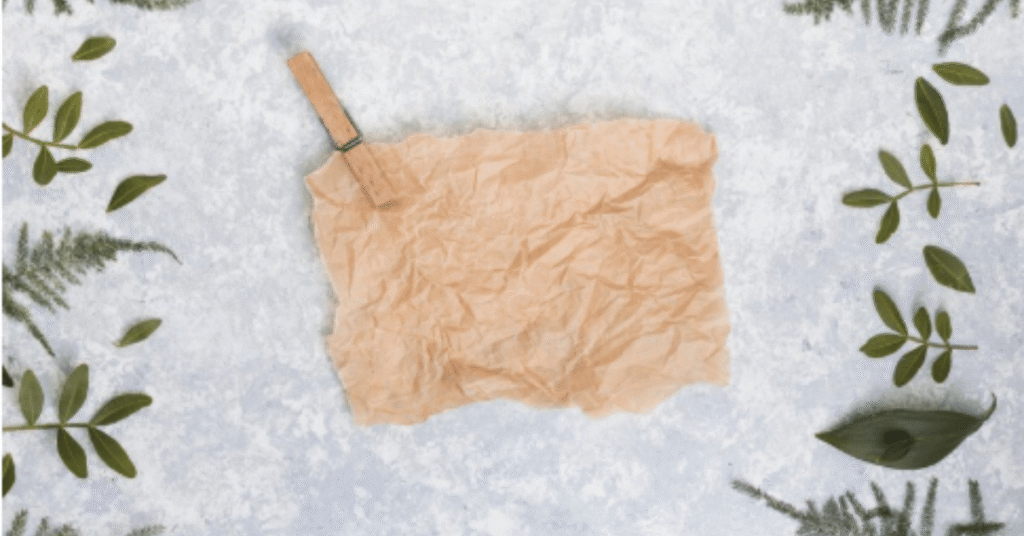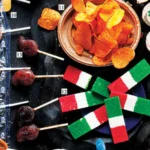Freezer paper is a specialized, moisture-resistant, and durable type of paper designed to wrap and protect food during freezing. Its unique construction features a plastic-coated side that prevents moisture loss and a plain paper side for labeling. This makes it invaluable for preserving meat, fish, baked goods, and even fresh produce for longer periods without freezer burn. Beyond its traditional kitchen role, freezer paper has found surprising applications in crafts, quilting, and even printing projects. Many home cooks and hobbyists underestimate its versatility, but understanding its full potential can transform both food storage practices and creative endeavors. In this comprehensive guide, we’ll explore freezer paper’s origins, how it works, best usage techniques, storage strategies, and innovative crafting possibilities. Whether you’re a culinary enthusiast looking to extend the freshness of your food or a DIY crafter searching for new project materials, this guide will help you unlock the true potential of freezer paper while avoiding common mistakes that lead to waste or spoilage.
Understanding Freezer Paper: Composition and Design
Freezer paper is made from heavyweight paper bonded to a thin layer of polyethylene on one side. This coating acts as a moisture barrier, preventing liquids from seeping through and protecting food from air exposure in the freezer. The uncoated paper side is designed to be writable, making it easy to label packages with dates, contents, and any preparation notes. Unlike wax paper or parchment paper, which are both coated on both sides and designed for non-stick cooking or baking, freezer paper’s single-sided plastic coating is optimized for long-term storage rather than oven use. Manufacturers typically offer it in large rolls for home kitchens or commercial food preparation environments. The thickness, usually measured in pounds (like 40-pound or 60-pound paper weight), directly affects its durability. A thicker paper provides better protection against punctures, making it ideal for heavy cuts of meat. The science behind freezer paper lies in its ability to block both moisture and oxygen, two key factors that contribute to freezer burn.
Freezer Paper vs. Other Food Wraps
Choosing the right wrap for freezing food often comes down to understanding differences between freezer paper, wax paper, and plastic wrap. Wax paper has a thin coating of wax on both sides, making it moisture-resistant but not nearly as durable as freezer paper. Plastic wrap, while effective for short-term storage, often sticks to itself and can tear easily when wrapping bulky items. Freezer paper stands out for its strength and labeling convenience. It can be molded tightly around irregular shapes without easily tearing. Its protective layer reduces the risk of ice crystal formation, which can damage the texture and flavor of food. While vacuum sealing is another excellent preservation method, it requires specialized equipment and can be more expensive over time. Freezer paper remains an affordable, reusable, and easy-to-use solution for most households, particularly for hunters, fishers, and bulk shoppers who need to preserve large quantities of food effectively.
Benefits of Using Freezer Paper
Freezer paper offers a range of benefits beyond simply wrapping food. First and foremost, it prevents freezer burn by blocking moisture and oxygen from reaching the food surface. It also allows you to write clear labels directly on the packaging, reducing the risk of forgotten or mystery freezer items. Freezer paper’s stiffness makes it easy to wrap even slippery or oddly shaped items without constant readjusting. Its non-absorbent plastic coating ensures that liquids such as meat juices stay contained, preventing messes and cross-contamination in the freezer. Moreover, freezer paper is reusable for short-term storage if it remains clean and intact. Many home cooks also appreciate its eco-friendlier footprint compared to single-use plastic wrap, especially when sourcing brands that use recyclable or sustainably produced paper. In the crafting world, freezer paper doubles as a stencil material or protective surface for painting, quilting, and fabric printing, showing its incredible versatility across different household needs.
Proper Techniques for Wrapping Food with Freezer Paper
The key to maximizing freezer paper’s benefits lies in wrapping technique. Begin by placing the item on the plastic-coated side, ensuring full contact with the surface to minimize air pockets. Fold the paper tightly around the food, pressing out as much air as possible. For meat cuts, fold over the edges securely before sealing with freezer tape rather than standard adhesive tape, which may lose stickiness in cold conditions. When labeling, always write on the paper side using a permanent marker to ensure readability after months in storage. For added protection, particularly for long-term freezing beyond six months, double-wrap the item with an additional layer of freezer paper or place the wrapped package in a resealable freezer bag. This combination further reduces exposure to air and moisture. Following these techniques ensures that your food maintains optimal texture, flavor, and color during storage.
Table 1: Comparison of Common Food Wrapping Materials
| Material | Coating Type | Best For | Durability in Freezer | Labeling Ease | Moisture Protection |
|---|---|---|---|---|---|
| Freezer Paper | Polyethylene (one side) | Meat, fish, baked goods | High | Excellent | Excellent |
| Wax Paper | Wax (both sides) | Short-term storage, baking | Low | Moderate | Moderate |
| Plastic Wrap | None (cling film) | Short-term, leftovers | Moderate | Poor | Good |
| Vacuum Sealing | Plastic bag (sealed) | Long-term all foods | Very High | Limited | Excellent |
Best Practices for Labeling and Organizing
Proper labeling and organization can make freezer papers use even more effective. Always include the date of freezing and the exact contents on the paper side to prevent confusion later. Use consistent abbreviations for items you freeze frequently, such as “GBC” for ground beef chuck or “CKT” for chicken thighs. Organize wrapped packages in your freezer by type—meats on one shelf, baked goods on another—to streamline retrieval and reduce the amount of time the freezer door remains open. Freezer paper’s smooth papers side makes writing easy, and unlike stickers, the writing won’t fall off or fade quickly. If you freeze in bulk, consider using colored permanent markers to categorize food types for quick identification. Taking these steps not only extends food quality but also prevents unnecessary waste caused by forgotten or improperly labeled items.
Storage Duration Guidelines for Common Foods
Knowing how long foods wrapped in freezer papers remain fresh is crucial for planning meals and avoiding spoilage. While freezer papers significantly extends storage life, it does not make food immune to quality decline over time. For instance, red meats like beef and lamb can stay fresh for 6 to 12 months, while poultry generally lasts 6 to 9 months. Fish, depending on fat content, can maintain quality for 3 to 6 months. Baked goods such as bread or cake can remain fresh for up to 3 months without noticeable texture changes. Always rotate stock using the “first in, first out” method to ensure older packages are used before newer ones. While freezer papers reduces the risk of freezer burn, eventually flavors can dull, and textures may change if stored far beyond recommended timeframes. For optimal taste and nutrition, it’s best to consume frozen foods within these guidelines.
Table 2: Recommended Freezer Storage Times Using Freezer Paper
| Food Type | Storage Time (Months) | Notes on Quality |
|---|---|---|
| Beef/Lamb | 6–12 | Retains texture and flavor well when wrapped properly |
| Poultry | 6–9 | Best when double-wrapped for longer storage |
| Fish (Fatty) | 2–3 | Higher fat content shortens optimal storage time |
| Fish (Lean) | 3–6 | Wrap tightly to prevent drying |
| Bread/Cake | 2–3 | Wrap slices individually for easier thawing |
| Vegetables | 8–12 | Blanch before freezing for best texture |
Creative and Non-Food Uses of Freezer Paper
Freezer paper’s durability and unique surface make it a favorite among crafters. Quilters use it to create precise templates, as the paper can be lightly ironed to fabric and peeled away without damage. Stencil makers appreciate its stiff texture for cutting intricate designs, and its plastic-coated side works well as a paint barrier. Some artists use freezer papers as a palette for mixing paints or as a protective table covering during messy projects. In home décor, it can serve as a transfer medium for printing designs onto fabric. Even in schools, freezer papers finds use in art classrooms for projects that require a sturdy, moisture-resistant surface. These non-food applications demonstrate that freezer papers isn’t just for the kitchen—it’s a versatile household tool worth keeping on hand for both practical and creative purposes.
Environmental Considerations and Sustainability
While freezer paper contains a plastic layer, many manufacturers now offer biodegradable or compostable alternatives. Consumers concerned about sustainability can look for freezer paper made from recycled fibers or certified by environmental organizations. Reusing freezer paper for non-food purposes, such as craft projects or temporary table covers, can also help reduce waste. For those who freeze food frequently, investing in reusable silicone wraps or cloth covers can complement freezer paper use and reduce single-use waste. The goal is to balance the convenience and protective qualities of freezer paper with mindful consumption practices. With proper care, a single sheet of freezer paper can often serve multiple purposes before being discarded, making it a practical yet eco-conscious choice for many households.
Conclusion: Unlocking the Full Potential of Freezer Paper
Freezer paper may appear simple, but it is a powerful ally in preserving food quality, preventing waste, and unlocking creative possibilities. Its moisture barrier, labeling convenience, and durability make it superior to many other wrapping options for long-term storage. By learning the proper wrapping, labeling, and storage techniques, you can extend the life of your food while keeping your freezer organized. Beyond the kitchen, freezer papers transforms into a valuable crafting tool, proving its adaptability in unexpected ways. As one seasoned home cook put it, “Freezer paper is the unsung hero of my kitchen—it keeps my food fresher and my creativity flowing.” Another quilter shared, “It’s not just paper—it’s a design partner in every project I make.” Whether you use it to store meat, bake bread, or create intricate fabric stencils, freezer paper’s a staple worth keeping within reach. By embracing both its culinary and creative uses, you’ll find that this humble material offers far more than meets the eye.
FAQs
1. What is the main purpose of freezer paper?
Freezer paper’s primarily designed to wrap and protect food during freezing. Its plastic-coated side prevents moisture loss and blocks oxygen, helping to avoid freezer burn. The plain paper side is ideal for labeling with a permanent marker, making it easier to identify contents months later.
2. How is freezer paper different from wax paper or parchment paper?
Unlike wax paper, which has a thin wax coating on both sides, freezer paper has a single plastic coating for stronger moisture resistance. Parchment paper is intended for baking and non-stick cooking, while freezer paper is made for long-term food storage in the freezer.
3. Can freezer paper go in the oven?
No. Freezer papers should not be used in the oven because its plastic coating can melt at high temperatures. For baking, parchment paper or silicone mats are the better options.
4. Can I reuse freezer paper?
Yes, but only if it remains clean and undamaged. For example, freezer papers used to wrap dry baked goods can often be reused for crafting or as a protective surface for messy projects.
5. How long will meat last in the freezer with freezer paper?
When wrapped properly, beef and lamb can last 6–12 months, poultry 6–9 months, and fish 3–6 months before quality starts to decline.







